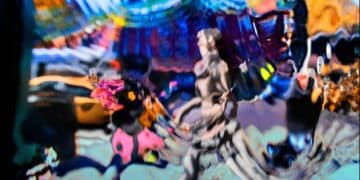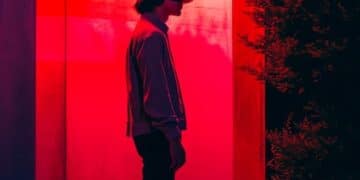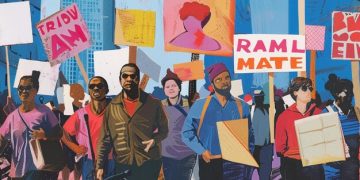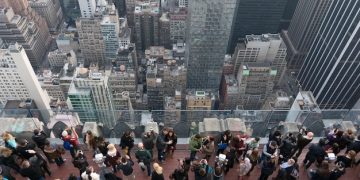Top 5 Emerging Art Forms Gaining Popularity in the US
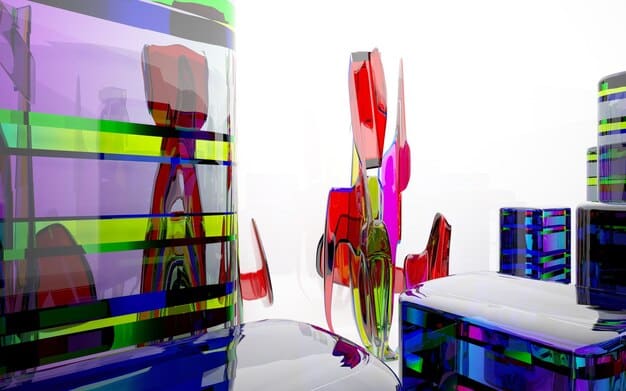
The top 5 emerging art forms gaining popularity in the US right now include digital art and NFTs, interactive and immersive installations, generative art, upcycled and sustainable art, and community-based participatory art, each reflecting evolving cultural values and technological advancements.
The art world is constantly evolving, and the United States is a hotbed of creativity. Are you curious about what are the top 5 emerging art forms gaining popularity in the US right now? From digital innovations to eco-conscious creations, let’s explore the trends shaping the future of American art.
Discovering the Dynamic World of Emerging Art Forms
The art scene in the US is undergoing a transformation, with new mediums and approaches capturing the imagination of artists and audiences alike. These emerging art forms often reflect contemporary social issues, technological advancements, and a desire for greater inclusivity and engagement.
Understanding these trends is key to appreciating the current cultural landscape and anticipating future artistic developments. By examining these innovative expressions, we gain insight into the values and concerns that are driving creative exploration in the United States.
Why Are Emerging Art Forms Important?
Emerging art forms challenge traditional notions of art and offer fresh perspectives. They often incorporate new technologies and materials, pushing the boundaries of what is considered art. Here are a few reasons why they matter:
- Innovation: They foster experimentation and innovation, leading to new artistic techniques and styles.
- Relevance: They often address contemporary issues, making art more relevant to everyday life.
- Accessibility: Many emerging art forms are more accessible to a wider audience, breaking down barriers to art appreciation.
As these art forms gain traction, they contribute to a more diverse and vibrant cultural ecosystem. They provide opportunities for emerging artists to showcase their work and connect with new audiences.
In the following sections, we will delve into the top 5 emerging art forms that are currently making waves in the US art scene.
1. The Rise of Digital Art and NFTs
Digital art has been around for decades, but its recent surge in popularity is largely due to the rise of Non-Fungible Tokens (NFTs). These unique digital assets have opened up new avenues for artists to monetize their work and connect with collectors.
From digital paintings and animations to virtual sculptures and interactive installations, digital art encompasses a wide range of creative expressions. NFTs provide a way to verify the authenticity and ownership of these digital creations, making them valuable collectibles.
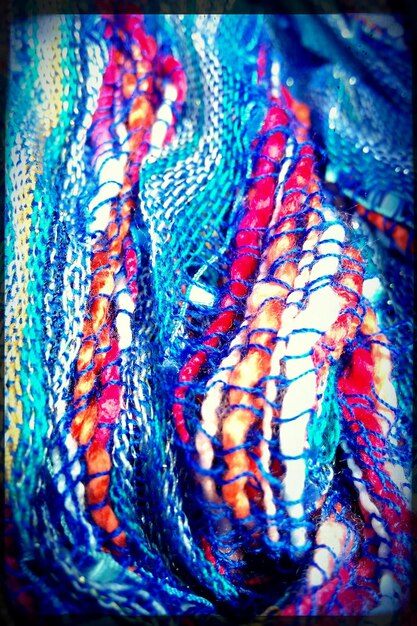
What are NFTs and How Do They Work?
NFTs are unique cryptographic tokens that represent ownership of a digital asset. They are stored on a blockchain, which is a decentralized and secure ledger. When someone purchases an NFT, they receive a unique token that proves their ownership of the associated digital artwork.
This technology has revolutionized the digital art market, allowing artists to sell their work directly to collectors without intermediaries. It has also created new opportunities for artists to earn royalties on secondary sales, ensuring they benefit from the appreciation of their work.
Examples of Digital Artists and NFT Platforms
Several digital artists have gained significant recognition through the NFT space. Here are a few notable examples:
- Beeple: Known for his digital collages and futuristic artwork, Beeple famously sold an NFT for $69 million.
- Pak: A digital artist and designer who creates conceptual NFTs, often exploring the boundaries of ownership and value.
- FEWOCiOUS: A young transgender artist who has achieved success with his vibrant and emotionally resonant digital paintings.
Platforms like OpenSea, Rarible, and Nifty Gateway have become popular marketplaces for buying and selling NFTs. These platforms provide artists with the tools they need to mint their own NFTs and list them for sale.
The combination of digital art and NFTs has democratized the art world, allowing artists to reach a global audience and collectors to support their favorite creators in new ways.
2. Interactive and Immersive Installations
Interactive and immersive installations are transforming the way people experience art. These large-scale artworks invite viewers to actively participate and engage with the environment, creating a sense of wonder and discovery.
By blurring the lines between art and reality, these installations encourage visitors to become part of the artwork itself. They often incorporate elements of light, sound, and technology to create multi-sensory experiences that are both captivating and thought-provoking.
The Appeal of Interactive Art
Interactive art breaks down the traditional barriers between the artist and the audience, fostering a sense of collaboration and co-creation. These installations are designed to be explored and manipulated, allowing visitors to shape the artwork in real-time.
The immersive nature of these installations creates a powerful emotional connection, as visitors become fully immersed in the artwork’s environment. This type of art is particularly appealing to younger audiences who are accustomed to interactive digital experiences.
Examples of Immersive Art Experiences in the US
Several museums and galleries across the US have embraced interactive and immersive installations. Here are a few notable examples:
- Meow Wolf: Known for its mind-bending installations that combine art, technology, and storytelling, Meow Wolf has locations in Santa Fe, Las Vegas, Denver, and Grapevine.
- teamLab: This Japanese art collective creates stunning digital installations that respond to visitors’ movements and interactions. Their exhibitions have been featured in museums around the world.
- Refik Anadol: Anadol uses data and machine learning to create immersive audiovisual installations that explore the intersection of art and technology.
These experiences offer a departure from traditional art viewing, providing a more dynamic and engaging way to connect with art. As technology continues to advance, we can expect to see even more innovative and immersive installations in the future.
Interactive and immersive installations are redefining the art experience, inviting audiences to become active participants in the creative process.
3. The Allure of Generative Art
Generative art is a fascinating blend of art and technology, where algorithms and computer programs are used to create autonomous artworks. Artists design the rules and parameters, but the computer generates the final output.
This approach allows for endless variations and unexpected outcomes, resulting in artworks that are both complex and beautiful. Generative art can take many forms, including visual art, music, and even architecture.
How Generative Art Works
Generative art is created using algorithms and computer code. Artists write programs that define the rules and constraints for the artwork. These programs can incorporate elements of randomness, allowing for unpredictable results.
The computer then executes the program, generating the artwork based on the defined rules. The artist can adjust the parameters and algorithms to influence the final outcome, but the computer ultimately has control over the details.
Examples of Generative Artists and Platforms
Several artists have made significant contributions to the field of generative art. Here are a few notable examples:
- Vera Molnár: A pioneer of computer art, Molnár began using algorithms to create geometric artworks in the 1960s.
- Manfred Mohr: Mohr creates abstract geometric artworks using computer code and algorithms.
- Tyler Hobbs: Hobbs is known for his generative art projects that explore the intersection of art and mathematics.
Platforms like Art Blocks and fxhash have emerged as popular marketplaces for generative art NFTs. These platforms allow artists to publish their generative algorithms, which can then be executed by collectors to create unique artworks.
Generative art offers a unique combination of human creativity and machine intelligence, resulting in artworks that are both visually stunning and intellectually stimulating.
4. Upcycled and Sustainable Art Initiatives
In an era of increasing environmental awareness, artists are turning to upcycled and sustainable materials to create impactful artworks. This approach not only reduces waste but also adds a new layer of meaning to the art.
Upcycled art transforms discarded materials into something new and beautiful, while sustainable art focuses on using eco-friendly materials and practices. Both approaches align with the growing desire for art that is both aesthetically pleasing and environmentally responsible.
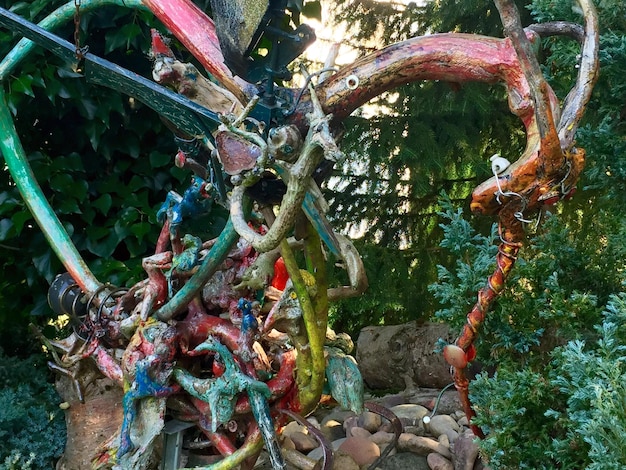
The Importance of Sustainable Art
Sustainable art addresses the environmental impact of art production, which can be significant. Traditional art materials often contain toxic chemicals and require energy-intensive manufacturing processes. By using sustainable materials and practices, artists can minimize their environmental footprint.
Upcycled art also raises awareness about the problem of waste and encourages viewers to consider the potential of discarded materials. It challenges the notion that art must be made from pristine materials, demonstrating that beauty can be found in the unexpected.
Examples of Upcycled and Sustainable Artists
Many artists are embracing upcycled and sustainable materials in their work. Here are a few notable examples:
- Vik Muniz: Muniz creates large-scale artworks using recycled materials such as garbage, sugar, and chocolate.
- Aurora Robson: Robson creates intricate sculptures from discarded plastic bottles and other plastic waste.
- Sayaka Ganz: Ganz creates sculptures of animals from recycled plastic objects.
These artists demonstrate the creative potential of upcycled and sustainable materials, inspiring others to adopt more environmentally conscious practices.
Upcycled and sustainable art represents a growing movement towards art that is both beautiful and environmentally responsible.
5. Community-Based Participatory Art
Community-based participatory art involves collaboration between artists and community members to create artworks that address local issues and concerns. This approach empowers communities to tell their own stories and shape their own environments.
These projects often take the form of murals, public sculptures, or performance art events that are designed to engage and involve a wide range of participants. Community-based art can foster a sense of belonging and pride, while also promoting dialogue and social change.
The Power of Collective Creativity
Community-based art projects bring people together, fostering a sense of shared purpose and collective creativity. These projects provide opportunities for community members to learn new skills, express themselves, and connect with their neighbors.
By involving community members in the creative process, these projects ensure that the artwork reflects the values and concerns of the community. This approach can lead to more meaningful and impactful artworks that resonate deeply with local residents.
Examples of Community-Based Art Projects in the US
Several community-based art projects have had a significant impact on their local communities. Here are a few notable examples:
- The City of Philadelphia Mural Arts Program: This program has created over 4,000 murals throughout the city, transforming neighborhoods and fostering community pride.
- Groundswell: This New York City-based organization works with young people to create public art projects that address social justice issues.
- Creative Time: This organization commissions public art projects that engage with pressing social and political issues.
These projects demonstrate the transformative power of community-based art, highlighting its potential to foster social change and create a more vibrant and inclusive society.
Community-based participatory art empowers communities to shape their own narratives and create meaningful artworks that reflect their unique experiences.
| Key Art Form | Brief Description |
|---|---|
| 🖼️ Digital Art & NFTs | Digital creations authenticated and sold as unique tokens. |
| 💡 Immersive Installations | Large-scale art that engages visitors through interaction. |
| 🤖 Generative Art | Art created using algorithms and computer programs. |
| ♻️ Upcycled Art | Art made from recycled materials, promoting sustainability. |
Frequently Asked Questions
Digital art and NFTs provide artists with new ways to monetize their work, reach a global audience, and ensure authenticity and ownership. Collectors can directly support artists and own unique digital assets.
Interactive installations invite viewers to actively participate and engage with the environment, creating a sense of wonder and discovery. They break down traditional barriers between art and the audience.
Algorithms and computer programs are used to create autonomous artworks in generative art. Artists design the rules and parameters, but the computer generates the final output, allowing for endless variations.
Upcycled art transforms discarded materials into something new and beautiful, reducing waste and raising awareness about environmental issues. It promotes sustainability and eco-friendly practices in the art world.
Community-based participatory art involves collaboration between artists and community members, addressing local issues and concerns. These projects foster a sense of belonging and pride, promoting dialogue and social change.
Conclusion
The emerging art forms gaining popularity in the US reflect a dynamic and evolving cultural landscape. From the digital realm of NFTs to the sustainable practices of upcycled art and the collaborative spirit of community-based projects, these trends showcase the innovative and socially conscious direction of contemporary American art.
